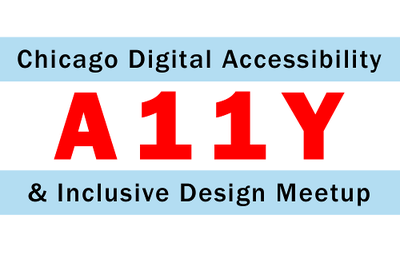 Hailing from Toronto, Canada, Billy Gregory is the Director of Training with The Paciello Group. Before joining TPG, and after failing to realize his dream of becoming a rock star, Billy focused his attention on front-end development working at small agencies, and at large corporations. It was during this time that he discovered his true love of the internet, and his wish that everyone be able to use it.
Hailing from Toronto, Canada, Billy Gregory is the Director of Training with The Paciello Group. Before joining TPG, and after failing to realize his dream of becoming a rock star, Billy focused his attention on front-end development working at small agencies, and at large corporations. It was during this time that he discovered his true love of the internet, and his wish that everyone be able to use it.
In his spare time, Billy is active in the Accessibility Community as Co-Organizer of “#a11yTO” which organizes Accessibility Camp Toronto, its monthly meet-up group, and #a11yTO Conf. He was also one half of the popular duo “The Viking and The Lumberjack. He is still not a rock star.
Billy will be presenting “#SUX: Some User Experience” at Accessibility Camp Chicago.
We asked Billy a few questions about his digital accessibility experiences leading up to Accessibility Camp Chicago.
How did you initially get involved with digital accessibility?
I kind of fell in to accessibility. A project I was working on at the time made it a requirement and I had to learn on the fly. I was hooked almost immediately. I loved the way it made me use HTML in ways I had never thought about before. You know, the correct way. After that I tried to get accessibility listed as a requirement for every project I was on. When I kept getting shot down, I figured out ways I could “sneak” accessibility into projects.
Do you feel that interest in accessibility is picking up momentum? How have you seen this?
My day job is the Director of Training at the Paciello Group. I feel like this has given me insight into a large number of different groups of web professionals. I can say without a shadow of a doubt, that I have seen a HUGE uptick in not just interest in accessibility, but in general knowledge. I used to have to spend a day talking about the basics (semantics, etc) and now the groups all seem to know that. It allows us to talk about more advanced topics. It’s awesome!
What are the major challenges that you are seeing in making sites and applications accessible?
This might contradict my previous answer, but interest is the biggest challenge. What I mean by that is that without 100% support and buy-in from all levels within an organization, it just won’t stick. Without a real investment from the top down, accessibility won’t happen.
What are the examples of success that you have seen in the wild?
I can’t name names, but the biggest successes I’ve seen are organizations that have invested heavily in accessibility. Not just in budgeting the time it takes to make an app accessible, but investments in training, support, and building a culture that promotes and encourages inclusion. Well… that and sites that have been sued into oblivion and had to make themselves accessible 😉
What is the one thing that excites you the most about your work in accessibility?
The people. Hands down. I’ve met some of the best people in my line of work. I also love it when I’m training a group, or giving a talk, and I see someone who starts out looking bored but by the end they are fully engaged and asking questions.
If you haven’t already registered for Accessibility Camp Chicago, register today!
